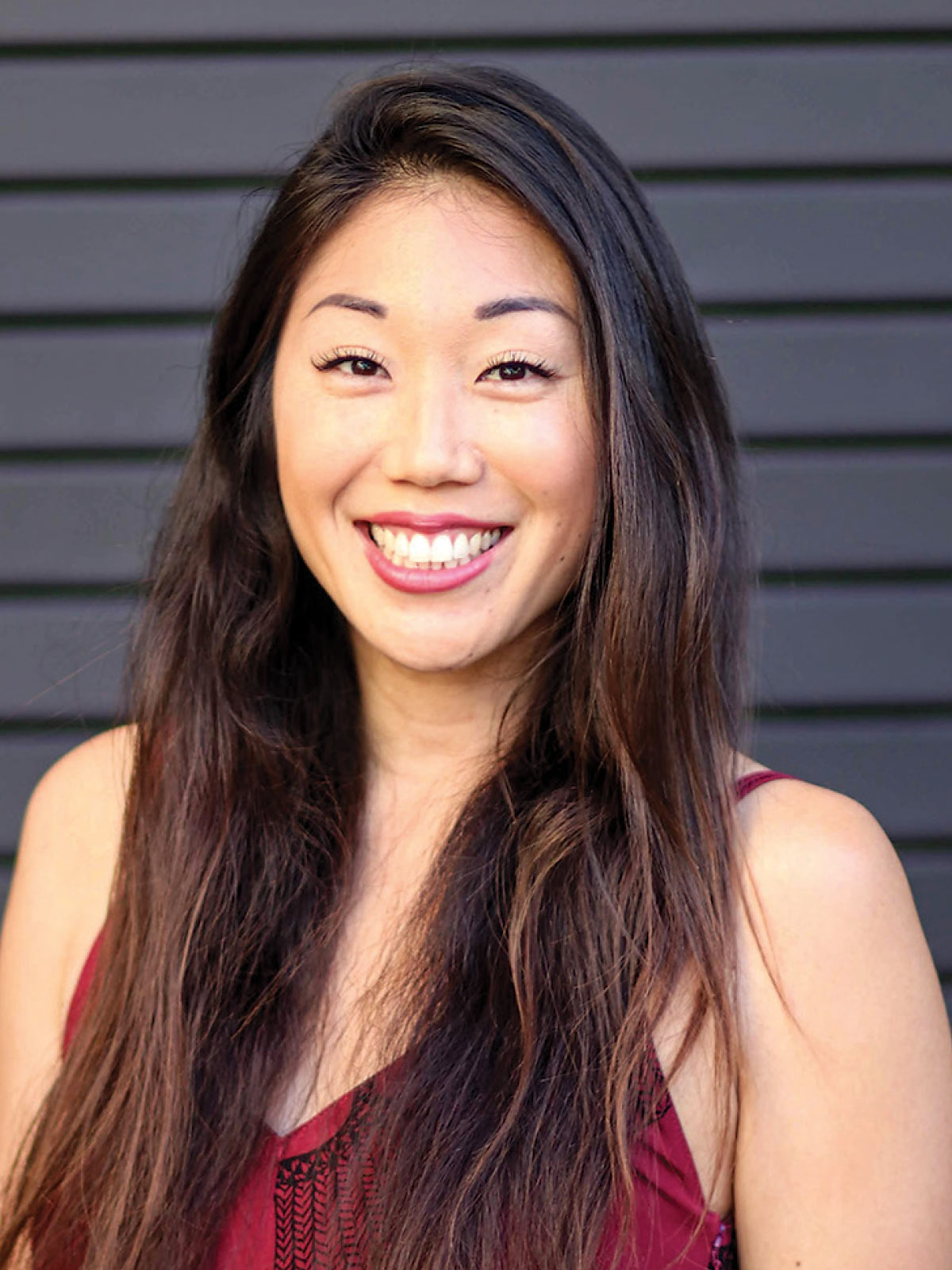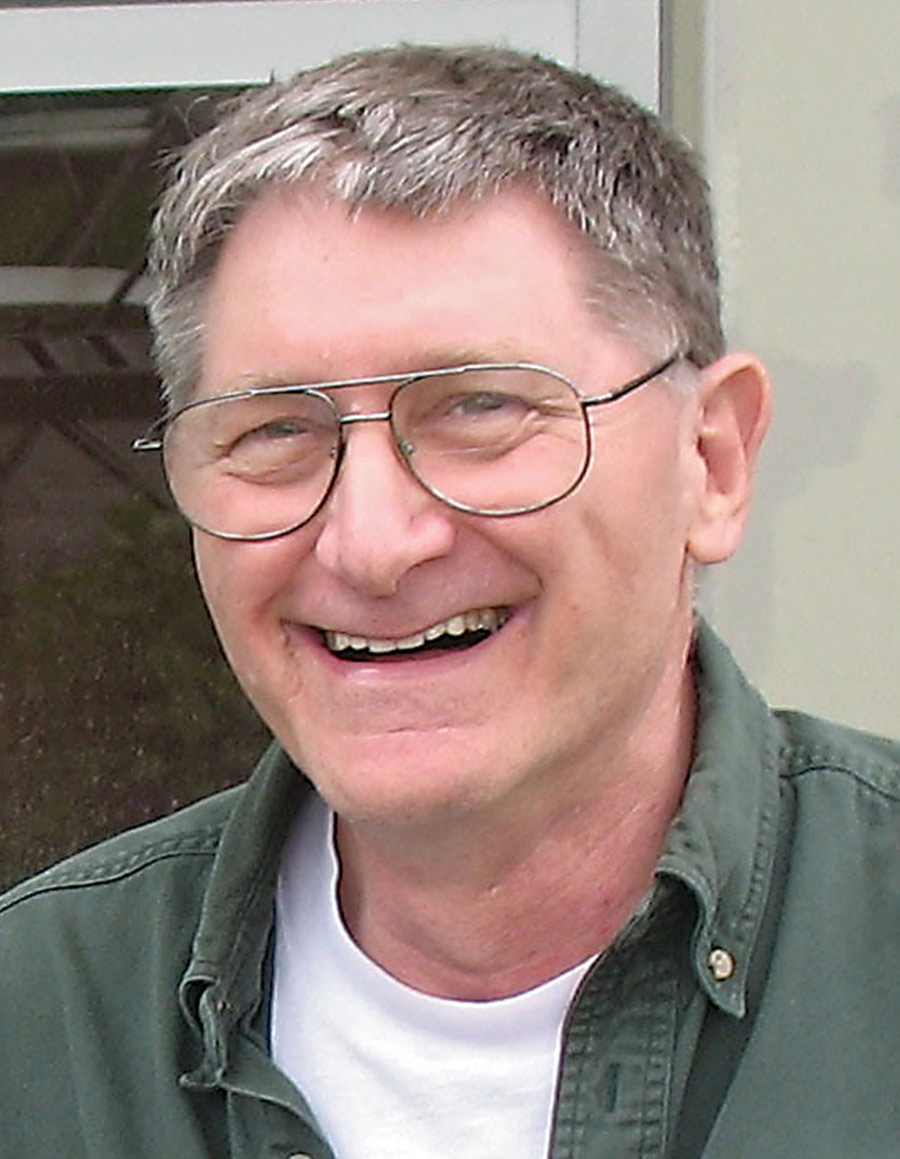Philadelphia is home to a growing number of immigrant communities. Jonah Eaton ’02 (left) is at work with other Swarthmoreans advocating for them as they navigate a new environment. At Philadelphia’s Nationalities Service Center, Eaton heads the legal department and works with Deputy Director Steven Larín ’97. The nonprofit is celebrating its 100th anniversary. (Story, pg. 34)
“Therefore in the light wait, where the unity is.”
— George Fox, a founder of Quakerism, 1656. Candle illustration by Brian Stauffer.
James Brady ’07
Duncan Stevens ’96
Force May Subdue, But Love Gains
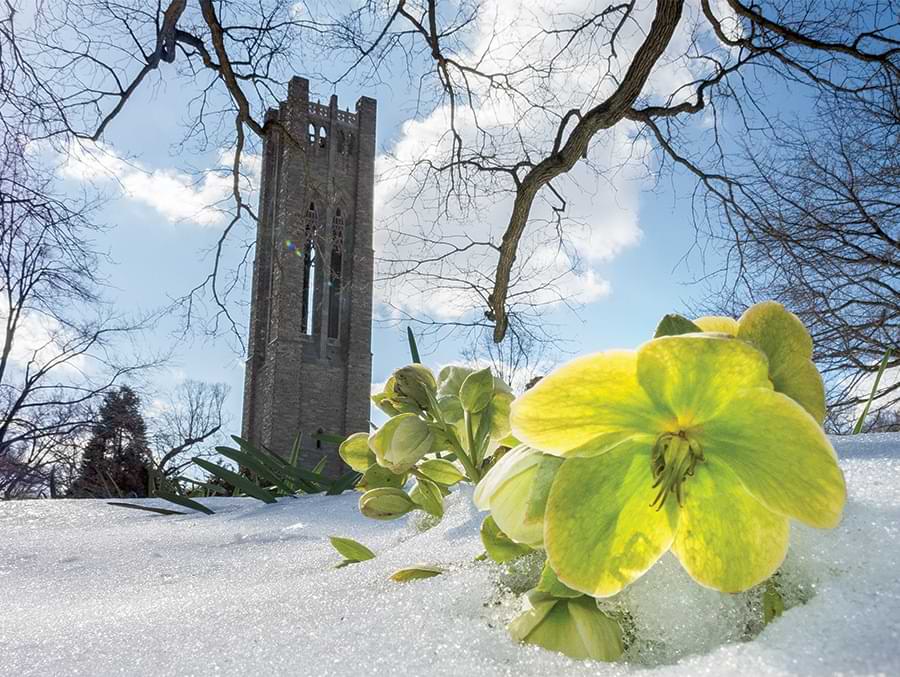
campbell

“Gun violence is not a series of isolated incidents,” says Oliver Hicks ’22, one of Smithey’s students. “It’s a systemic problem of pandemic-level proportions.” Read more about this critical research and work in community activism in Elizabeth’s Slocum’s story “Partners in Peacebuilding” on pg. 20.
campbell
The stories of this winter Bulletin highlight the responsibilities of citizenship, and of Swatties who heed the call to change seemingly intractable mechanisms and problems with a precise vision of what is just. In “The Long Path Home” and “A Way Out,” we meet Swarthmoreans advocating for those who are displaced and in search of better, safer lives.
Learn how their own personal experiences helped shape the meaning of this urgent work. Envisioning a more peaceful society in 1693, Pennsylvania Quaker William Penn wrote, “A good end cannot sanctify evil means, nor must we ever do evil. … Force may subdue, but Love gains.” We hope this issue shares with you the gains.
swarthmore college bulletin
Kate Campbell
Managing Editor
Elizabeth Slocum
Senior Editor
Ryan Dougherty
Staff Writer
Roy Greim ’14
Class Notes Editor
Heidi Hormel
Designer
Phillip Stern ’84
Photographer
Laurence Kesterson
Administrative Coordinator
Lauren McAloon
Editor Emerita
Maralyn Orbison Gillespie ’49
Email: bulletin@swarthmore.edu
Telephone: 610-328-8533
We welcome letters on articles covered in the magazine. We reserve the right to edit letters for length, clarity, and style. Views expressed in this magazine do not necessarily reflect the opinions of the editors or the official views or policies of the College. Read the full letters policy at swarthmore.edu/bulletin.
Send letters and story ideas to
bulletin@swarthmore.edu
Send address changes to
records@swarthmore.edu
Printed with agri-based inks.
Please recycle after reading.
©2022 Swarthmore College.
Printed in USA.

On Our Radar
The Power of the Arts
I write as a member of the Class of ’61, which celebrated the growth of the arts at Swarthmore since our undergraduate days during our virtual 60th Reunion last June. We organized a faculty forum focused on the growth into the curriculum of the College.
The faculty included Andrew Hauze ’04 from Music, Sharon Friedler from Dance, Allen Kuharski from Theater, Randall Exon from Studio Arts, Patty White from Film & Media Studies, and Nat Anderson, director of the Creative Writing Program. Their forum was glorious, reflecting their love of the arts and their interrelatedness, with keen attention to the process and timing of their growth and their contributions to the cultural life of the campus community.
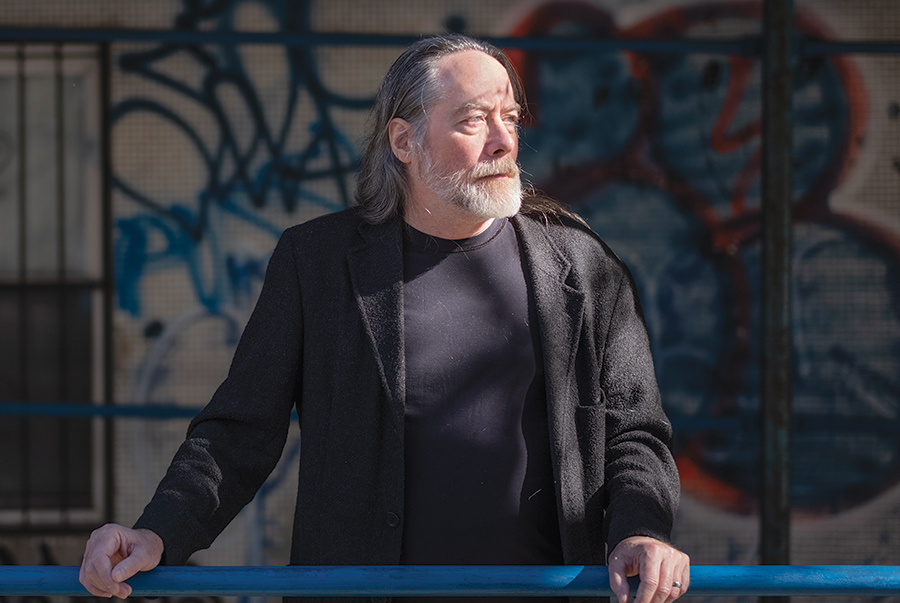
DO YOU SEE, AMERICA?
For the past three decades, my work has been focused on understanding violence, particularly gun violence. As a professor of criminal justice at John Jay College of Criminal Justice in New York City and the director of the National Network for Safe Communities at John Jay, my intention has been first to act — to do something that works — and then beyond that help people who do not already care or understand why they should.
studentwise: Fostering Collaboration
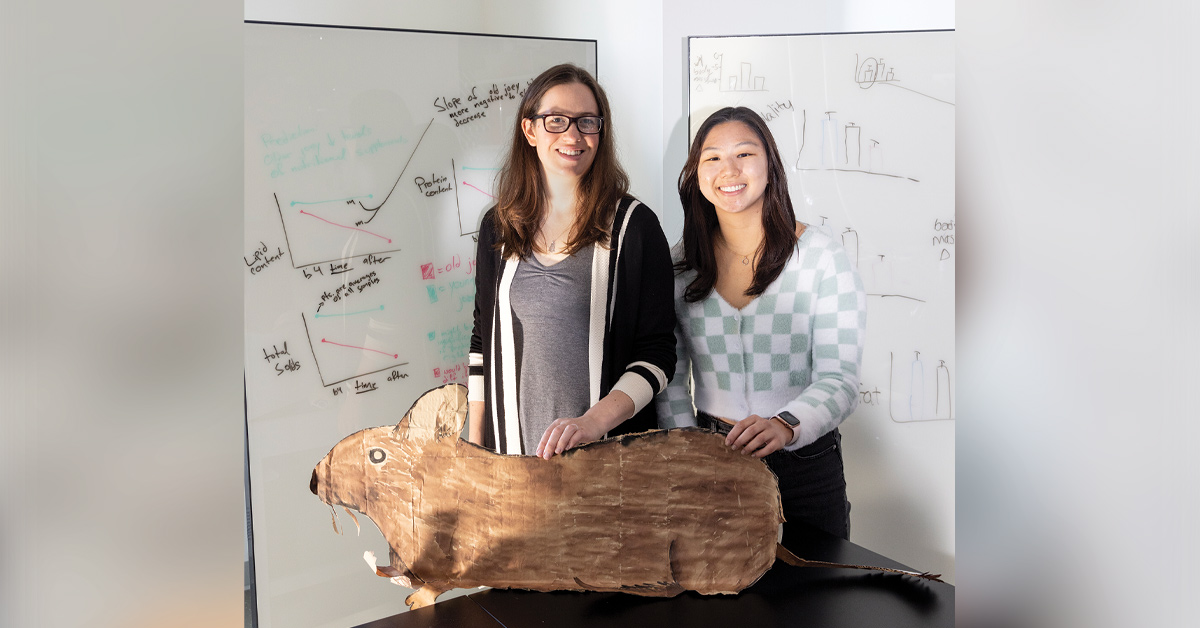
studentwise: Fostering Collaboration
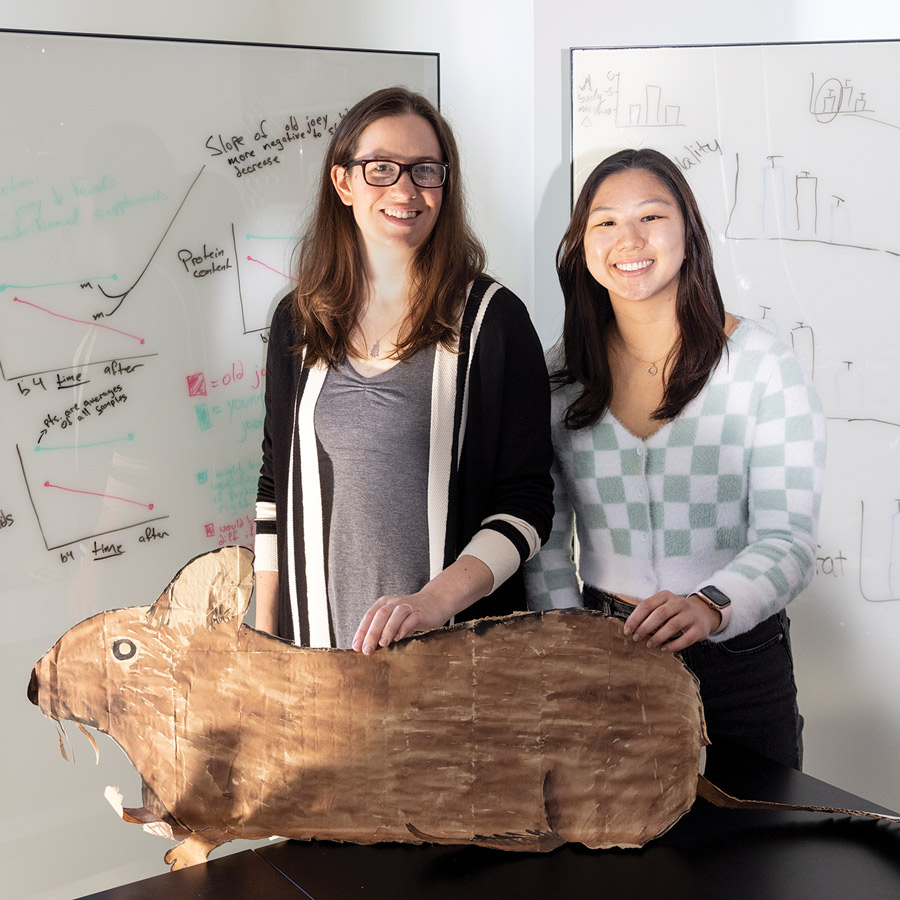
HOT TYPE: New releases by Swarthmoreans
Emily Klein Abel ’64
Sick and Tired: An Intimate History
of Fatigue
UNC Press
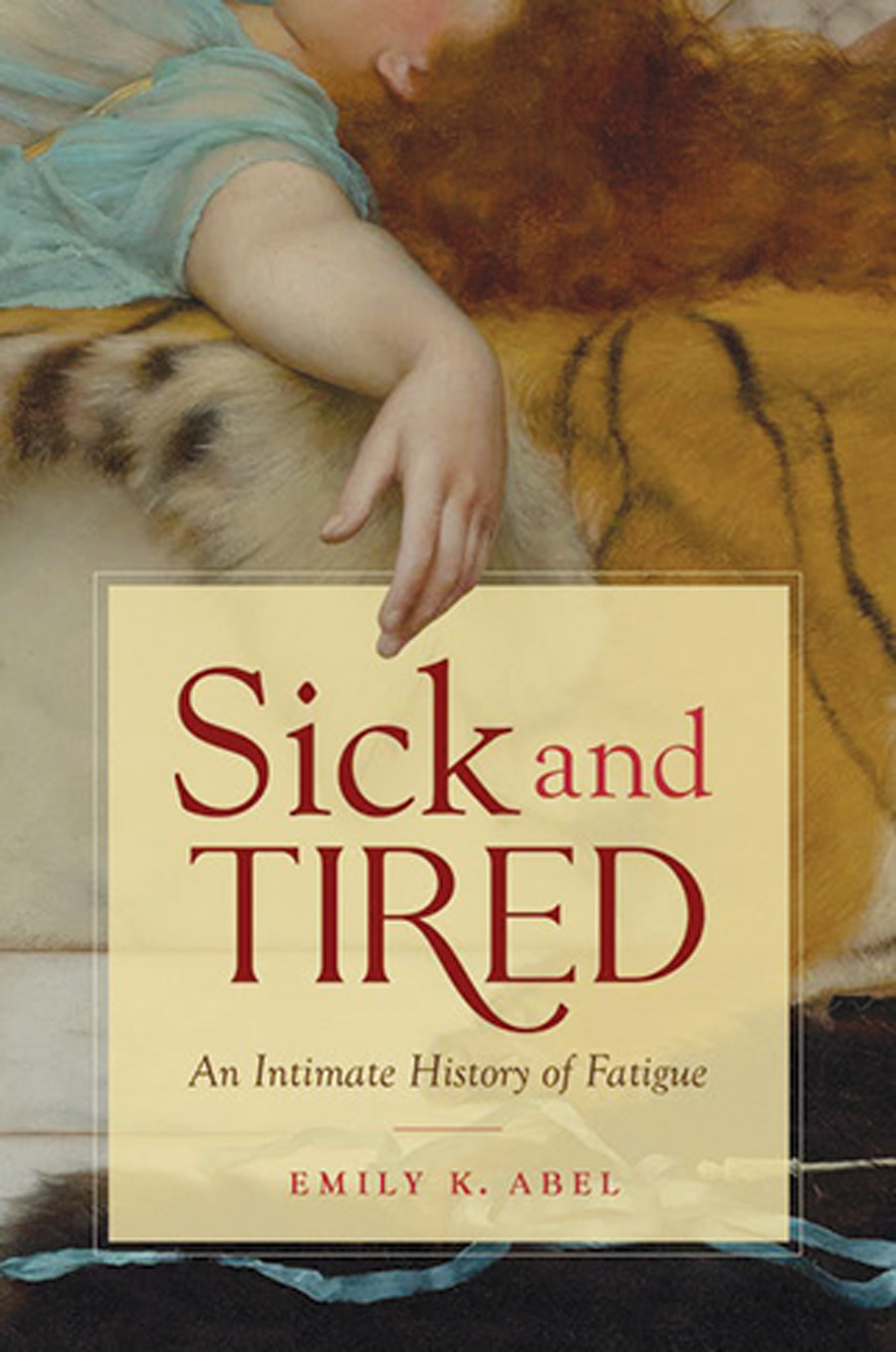
Joseph Horowitz ’70
Dvorák’s Prophecy and the Vexed Fate of Black Classical Music
Norton
The View From Here
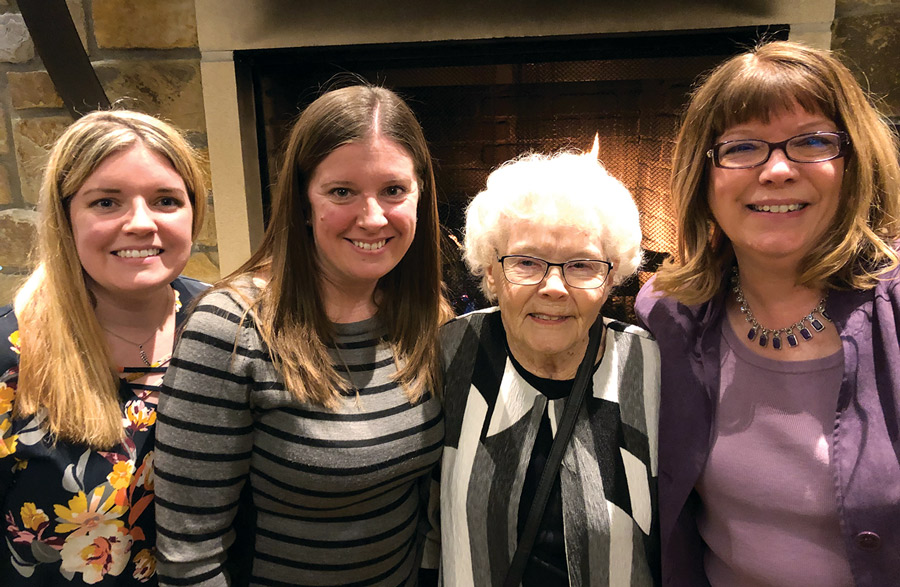
sharing success and stories of swarthmore

Performance Associate Jeannine Osayande was honored for her work in equity and social justice.
CELEBRATE
bit.ly/JOsayande
Six faculty members reflect on courses supported by the President’s Fund for Racial Justice.
Absorb
bit.ly/SwatPFRJ
Visiting Professor James Fenelon discusses his scholarship on Native Nations.
Acknowledge
bit.ly/FenelonQA
A capstone project of the course Borders and Migration documents the experiences of immigrants in the U.S.
Engage
bit.ly/MigrationSwat
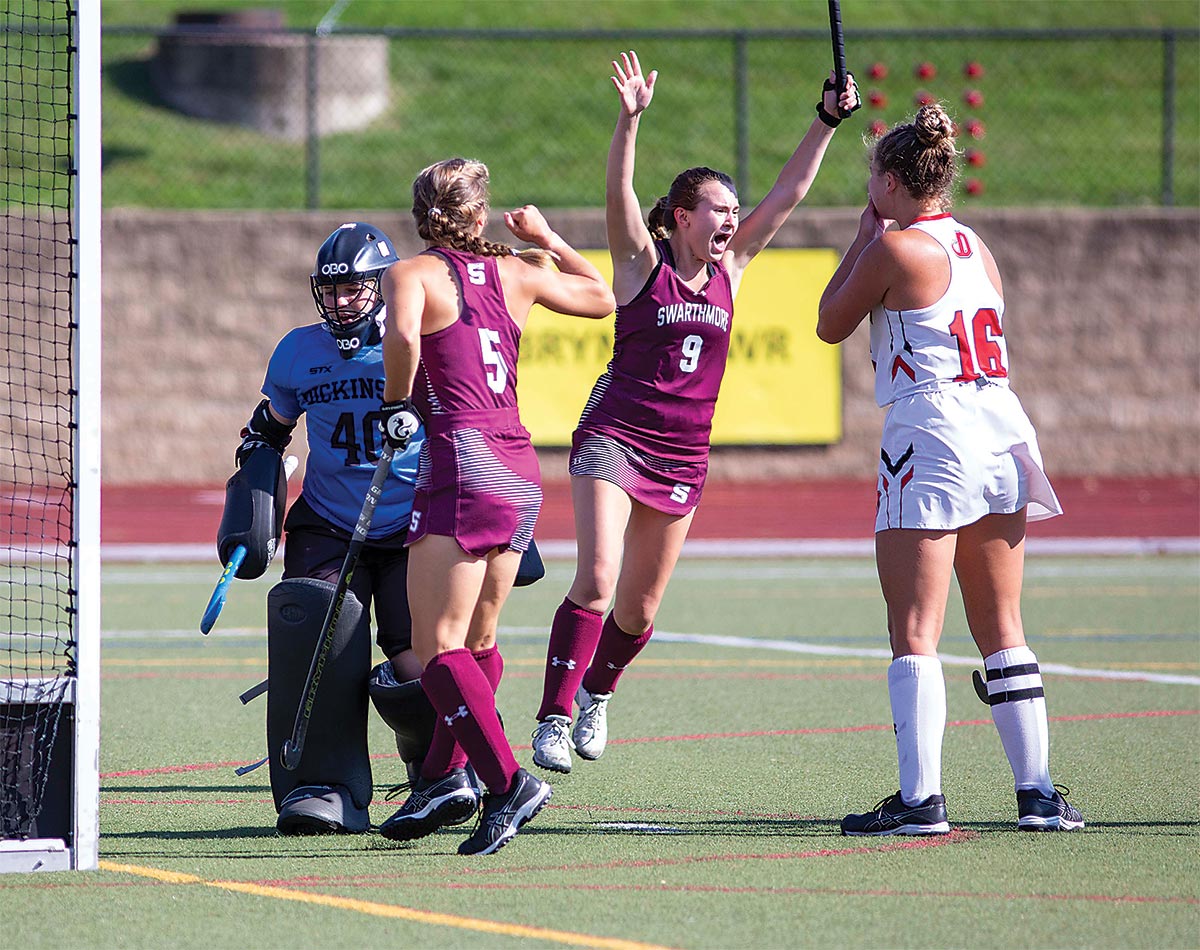
Bringing Their
A-Game
common good
Top Notch

Game On
Sekula, the more serious player, introduced Lebryk to competitive gaming like Magic: The Gathering and Pokemon. “I made my own card games growing up,” he says.
In Tribute to Three Friends
Swarthmore mourns the recent loss of three valued community members: two esteemed emeritus professors and a devoted member of the Public Safety staff.
Stephen Maurer ’67
, the Neil R. Grabois ’57 Professor Emeritus in the Natural Sciences and Engineering, died Aug. 25. He was 75.
A mathematics major at Swarthmore, Maurer returned to the College as a faculty member in 1979 and taught classes at all levels for nearly 40 years, including calculus, linear algebra, statistics, and discrete mathematics, his specialty. Maurer also relished opportunities to serve his department and the larger campus community, serving as associate provost for information technology in 2000–03, and twice chairing the Mathematics Department, first for a year in the early 1990s and again from 2004 to 2011.
“Steve was a born leader, one who brought energy and goodwill to any leadership role he held, and his dedication to teaching is legendary,” says Retired Professor of Mathematics and Statistics Deb Bergstrand. “I have such respect for him and his legacy as a dedicated colleague and all-around fine human being.”
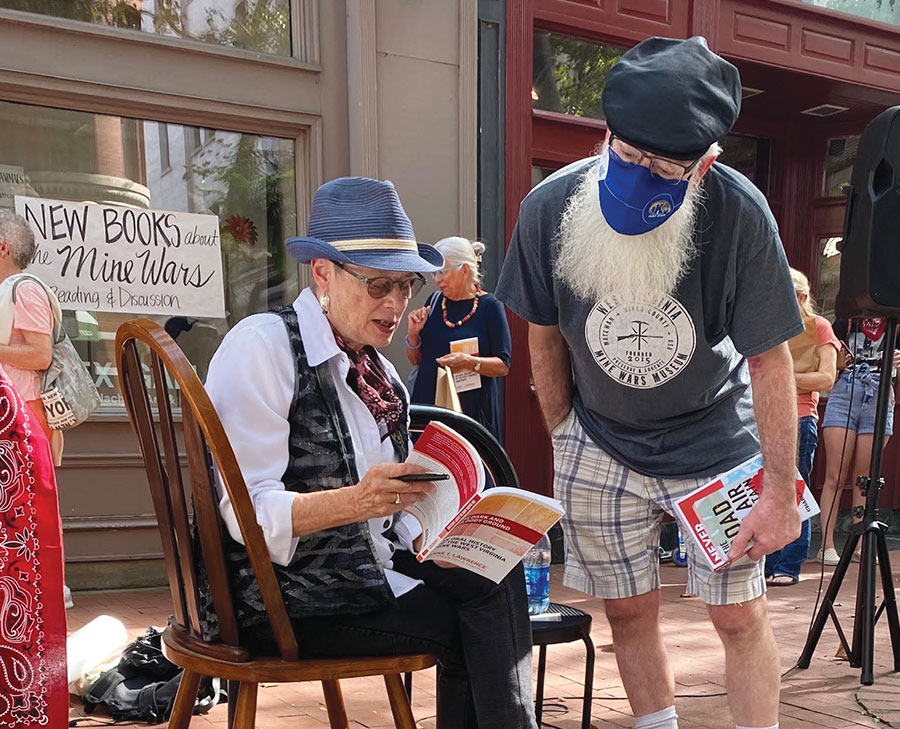
Mine Wars
How good listening skills helped craft a book 50 years in the making
Anne T. Lawrence ’74
Hooked on Humanities
“I had a small car, a Toyota Corona, I had a portable tape recorder, and I had little cassette tapes,” says Lawrence, who took a leave from Swarthmore and her studies in history and sociology to “set about tracking down mostly elderly people who had participated themselves or had family members or friends who participated in several key historical events that had taken place in the 1920s and 1930s.”
All In
Bringing skills learned at Swarthmore to the poker table
What were the odds that James Brady ’07 would become a professional poker player?
Pretty low, if you had asked Brady in college. The Philadelphia resident started playing with friends as a student at Swarthmore “but was one of the worst players in the bunch,” he says. Through a little bit of luck and a lot of skill-building, however, Brady upped his game, enabling him to pursue poker full time.
“I enjoy the analytical aspect of poker, but also the social and psychologically demanding elements,” says Brady, who has won almost $300,000 so far in his career. “Swarthmore allowed me to study a variety of subjects, and I get to bring different parts of my brain to the poker table depending on what the situation demands.”

James Brady ’07
Poker Pro

All In
What were the odds that James Brady ’07 would become a professional poker player?
Pretty low, if you had asked Brady in college. The Philadelphia resident started playing with friends as a student at Swarthmore “but was one of the worst players in the bunch,” he says. Through a little bit of luck and a lot of skill-building, however, Brady upped his game, enabling him to pursue poker full time.
“I enjoy the analytical aspect of poker, but also the social and psychologically demanding elements,” says Brady, who has won almost $300,000 so far in his career. “Swarthmore allowed me to study a variety of subjects, and I get to bring different parts of my brain to the poker table depending on what the situation demands.”
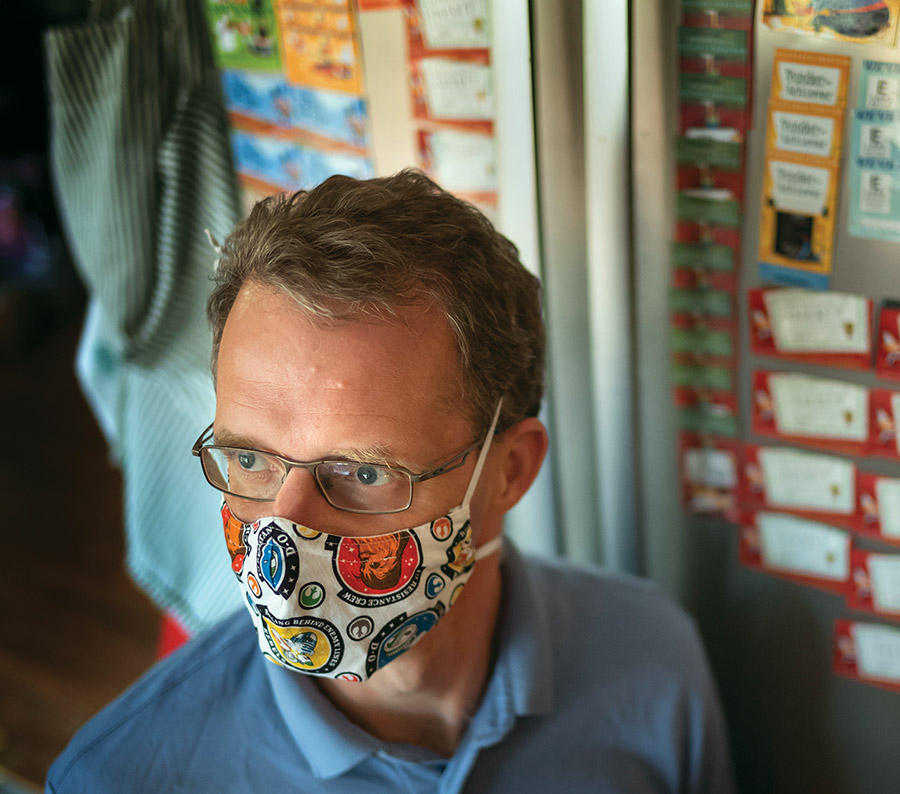
Surely, He Jests
“I would never think of a person I know only in a very dry, official context picking up a paper to read this humor contest in the back,” says Stevens, an appellate-litigation attorney in Vienna, Va. “The worlds are so far apart.”
In the world of the Post’s The Style Invitational, however, Stevens’s humor is money in the bank. Last year, he had 138 jokes published — far more than any of the thousands of other entrants from around the world. Deadpan and middlebrow, Stevens’s style is rooted in word play. A favorite was his response to a Cider House Rules prompt: “Man, this is one awesome cider house!”
Partners in Peacebuilding
photos by Laurence Kesterson

Of a family searching for answers or justice. Of a community rallying for resources in response to senseless shootings. Of a loved one lost to gun violence.
Those stories often go unheard in the greater narrative of gun violence. As mass shootings and other high-profile crimes dominate headlines, community violence tends to get pushed aside as an unfortunate reality of American life.
A Swarthmore project is trying to alter that narrative. Launched this fall, the Delaware County Homicide Database (delcohomicides.swarthmore.edu) is an online dashboard and interactive map that tracks all violent deaths in Pennsylvania’s fifth-most-populous county, the vast majority of which are firearm-related. Created by students under the guidance of Professor of Peace & Conflict Studies and Sociology Lee Smithey, the database aims to assist in the prevention of gun violence while painting a fuller picture of the effects of firearms.
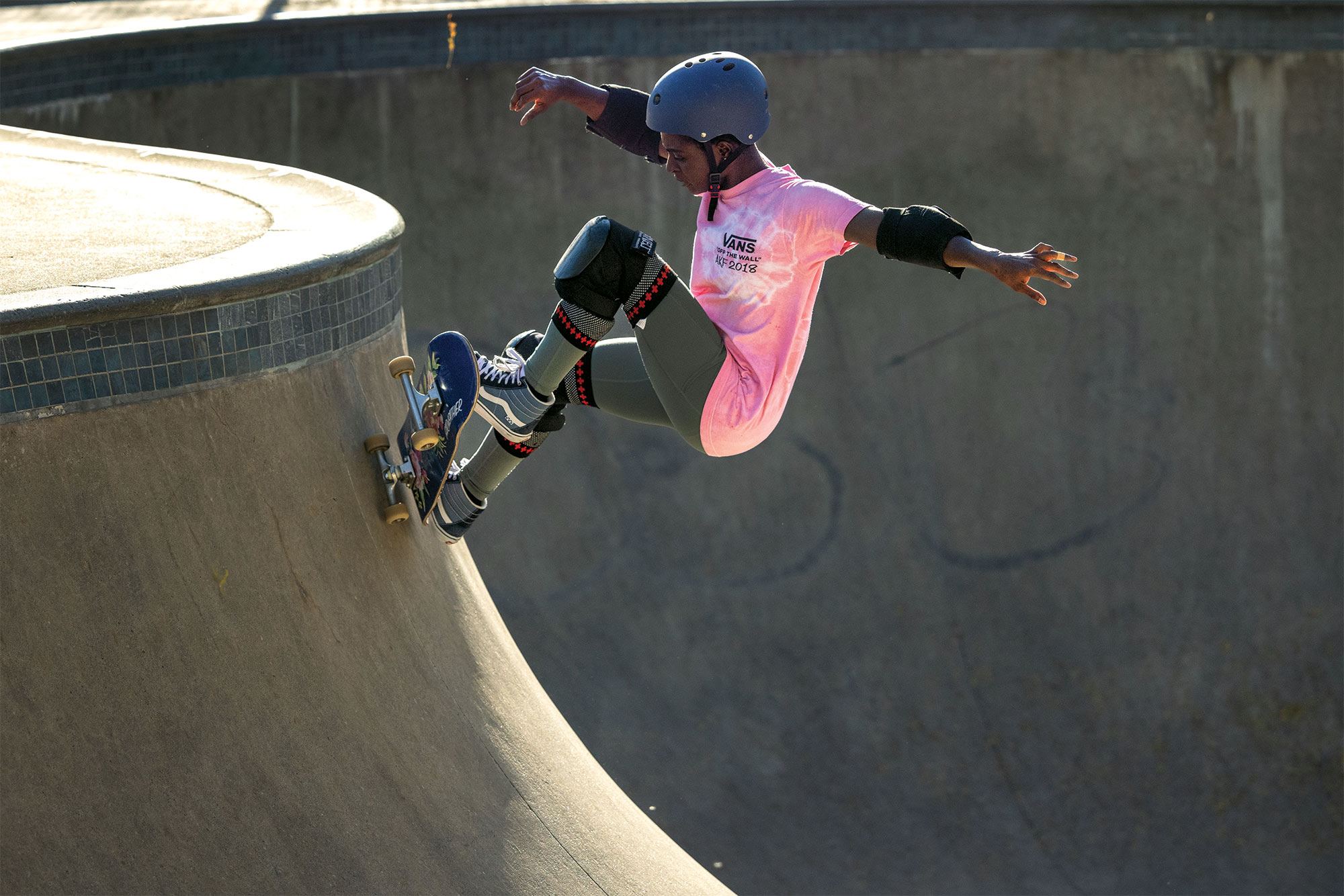
Dropping In

Dropping In
Skateboarding coach Mame Fremah Bonsu ’14 fell in love with the sport thanks in no small part to the Tony Hawk Pro Skater video game franchise. Before videos were readily available online, devotees swapped VHS tapes of their favorite riders; Bonsu, a native of Lewiston, Maine, didn’t have access to these videos but immersed herself in skateboarding via her Nintendo GameCube.
Fast-forward to last June, when Bonsu was working at Substance Skatepark in Brooklyn, N.Y., where she lives, and happened to meet — and then skate with — the legendary Tony Hawk.
The
Long
Path
Home
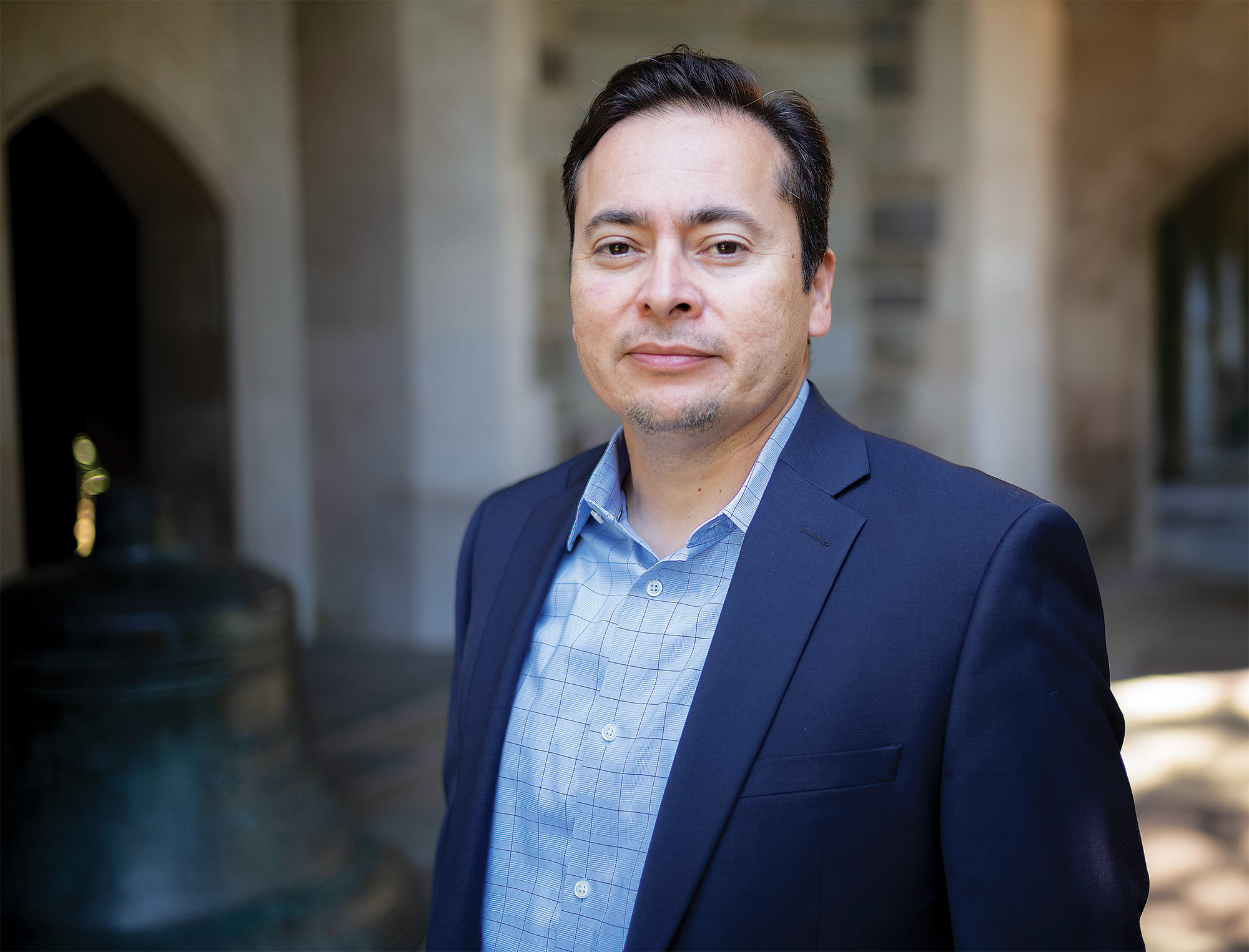
uring Steven Larín ’97’s childhood, El Salvador filled the news headlines. Civil war. Fight to stop communism. What he heard watching the news, however, differed from the talk at home.
“There are people at the other end of those stories,” Larín’s parents reminded him. “Families trying to just live their lives.”
As the family gathered around the dinner table during the 1980s, they spoke of friends who’d disappeared or been killed. Today, the human stories are the focus of Larín’s lifelong work with immigrants and refugees. Larín is deputy director of Nationalities Service Center, a Philadelphia-based nonprofit celebrating its 100th anniversary. As an attorney specializing in asylum cases and immigrant youth, he has worked directly with immigrant families for 20 years.
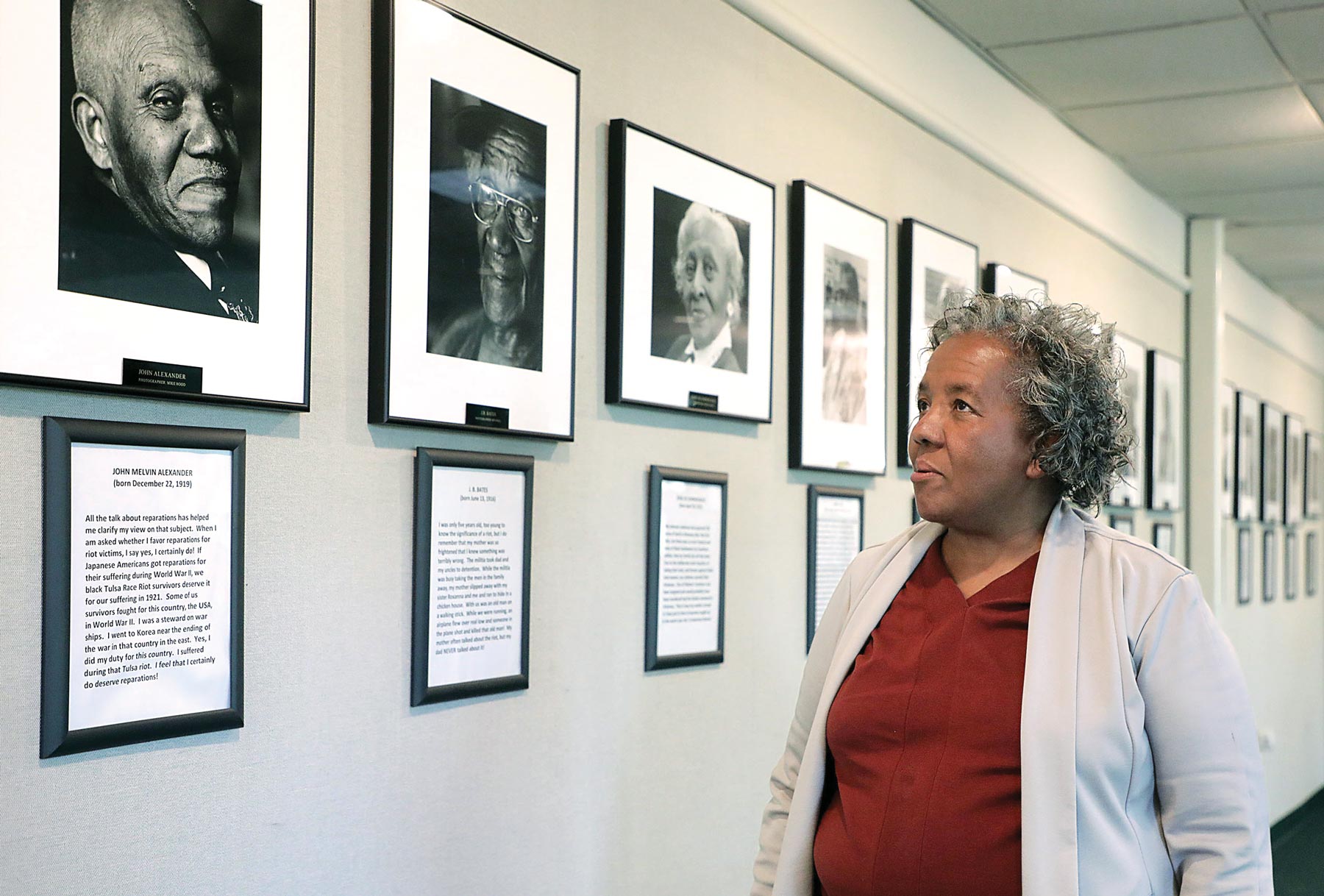
A Matter of Resilience

As a girl, she fell in love with slide rules and regretted when they were replaced by calculators. She sat in on her brother’s math tutoring lessons. Their mother, a certified substitute teacher, bought textbooks for home study and gave her children reading assignments.
“Mom made it perfectly clear to my older brother, Paul, and me that all of our schooling was in preparation to go to college,” says Alexander, a pioneering Black lawyer in eastern Oklahoma. “She had definitive ideas about the education of her children. In retrospect, Paul and I have realized that we were sent to school, but we were also home-schooled.”
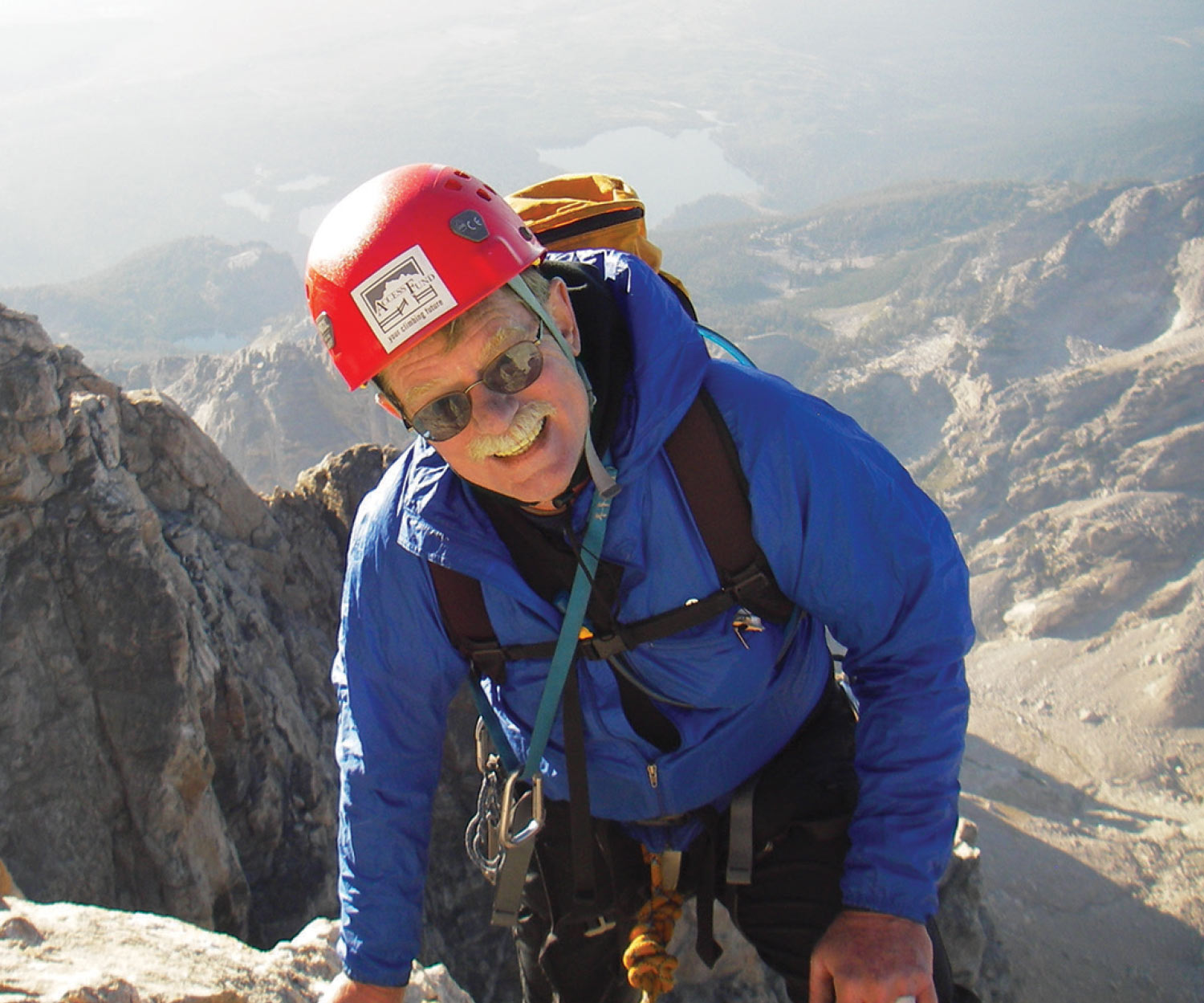
a way out
hough he has had his share of high-risk endeavors, David Thoenen ’68 never expected to be involved in dangerous evacuation efforts from Afghanistan.
Thoenen, a mountaineering and climbing enthusiast who retired from a 35-year career at IBM, signed up in 2017 to volunteer for Ascend. The nonprofit organization offers a mountaineering program designed to build leadership skills for Afghan girls and women ages 15 to 24.
“All sorts of great things were happening in line with the objectives of the program, and we were expanding and bringing in more young women,” says Thoenen, who now serves as chair of Ascend’s board. But in May 2021, the Taliban started to scoop up Afghanistan province by province, and by mid-August they had arrived in Kabul. On Aug. 31, the U.S. completed withdrawal of its troops, ending a 20-year war in Afghanistan.
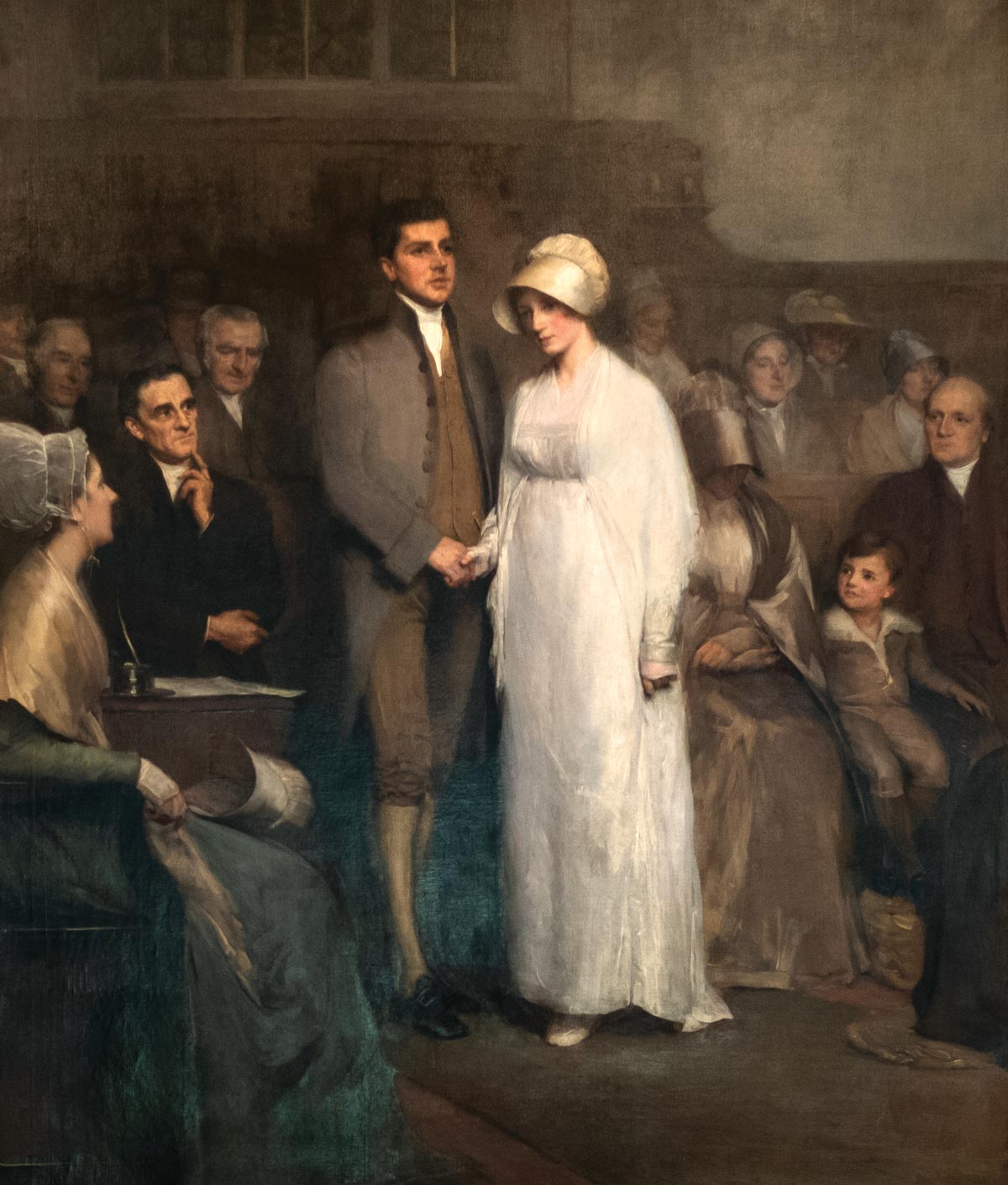
Always a Bride

During the painting’s showing in London’s Royal Academy, the name it is now known by became popular. Anachronistic, in that the bride is shown dressed in white — a custom not followed until the mid-1800s — the painting nonetheless conveys the deep meaning and simplicity of a wedding in the manner of Friends. Set in the Friends Meetinghouse at Jordans, Buckinghamshire, the marriage represented did not actually take place. The models were relatives and friends of the artist, himself a Quaker, and included his brother-in-law as the groom and his wife as the woman with the bowed head sitting behind the bride, along with other “weighty” Friends.
class notes

Alumni Weekend 2022: One Swarthmore
May 27–29
All alumni are invited to join us on campus as we make up for lost time.
swarthmore.edu/alumniweekend
Virtual Reunion Events
February through May
Classes celebrating milestone reunions — those ending in 2 or 7 — will host virtual events leading up to Alumni Weekend, to break the ice and involve as many alumni as possible in the celebration.
Volunteer with a Swarthmore Affinity Group
Swarthmore Alumni of Color, Swarthmore Black Alumni Network, and the Swarthmore LGBTQ+ Alumnx Network are looking for alums to help us grow. Find out more about volunteer opportunities to assist in building our network by contacting Caitlin Halloran Edwards at challor2@swarthmore.edu.
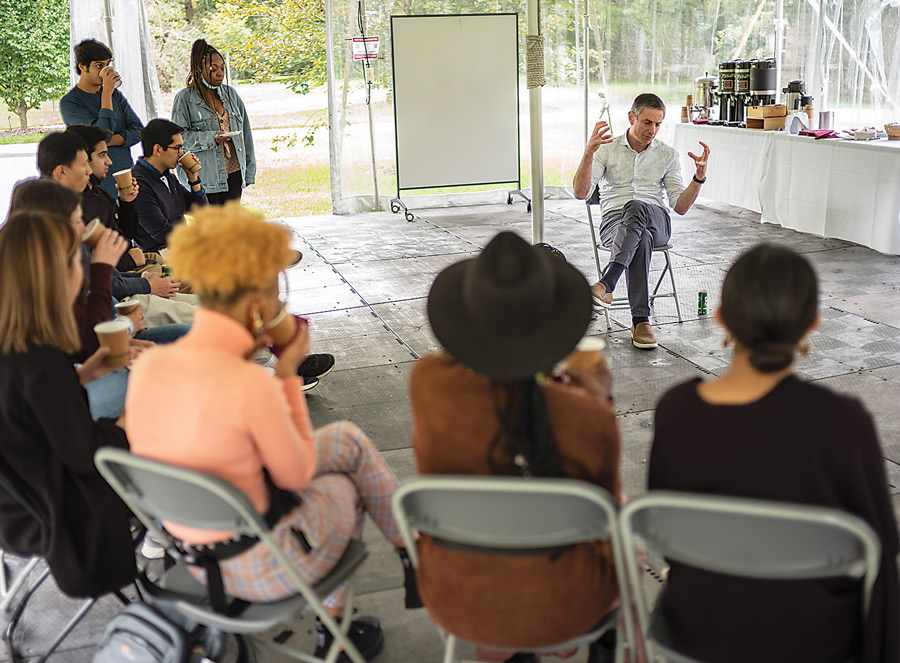
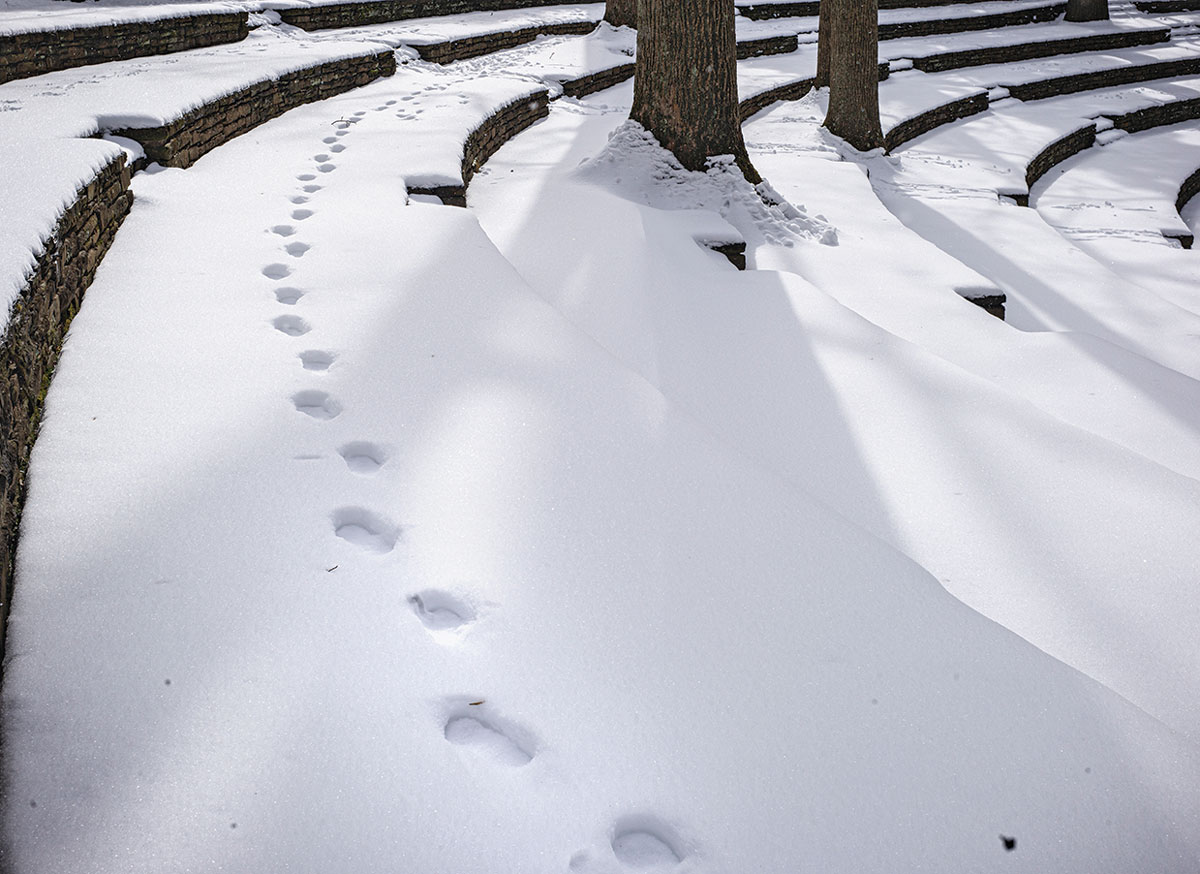
their light lives on
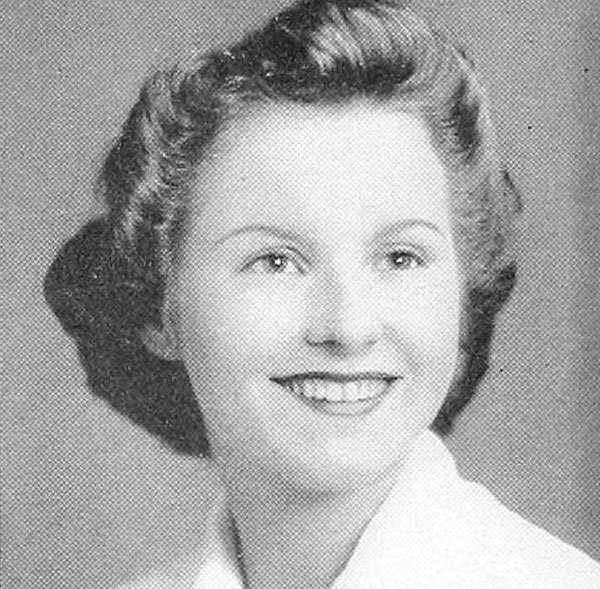
A longtime teacher in Jenkintown, Pa., Connie died Sept. 20, 2021.
An English literature major, she earned a master’s in elementary education from Temple University. Connie was a member of the Studio Art Group and College Dancers at Swarthmore and served as class secretary and vice president.
Janet, a retired elementary school teacher and mother of three, died Sept. 9, 2020.
Janet graduated with a psychology degree from Swarthmore, where she was a member of the Chorus, the Phoenix, and the synchronized swimming team. In 1968, she earned a certificate in elementary education from California State University Stanislaus in Turlock.
Joseph, a psychoanalyst and Navy veteran of World War II, died May 19, 2021.
Joseph earned a medical degree from the University of Maryland School of Medicine and had a private psychoanalytic practice for 55 years, during which he wrote numerous chapters, articles, and books, including Psychoanalysis and Motivation. He was clinical director of the Sheppard Pratt Psychiatric Hospital in Baltimore, where he also taught; he also created and served as editor-in-chief of the Psychoanalytic Inquiry journal, co-founded the Institute of Contemporary Psychotherapy and Psychoanalysis, and taught at a number of higher education institutions.
Peter, a longtime sociologist at the University of New Hampshire in Durham who enjoyed participating in the Newburyport (Mass.) Choral Society, died Nov. 7, 2021.
An Army veteran, having served from 1945 to 1946, Peter graduated with high honors in history from Swarthmore, where he worked for the Phoenix and later served as class agent. After completing a Fulbright scholarship in Belgium, Peter earned a master’s and a Ph.D. in social sciences from Harvard University before joining the faculty of the University of New Hampshire, where he retired as an associate professor emeritus of sociology.
looking back
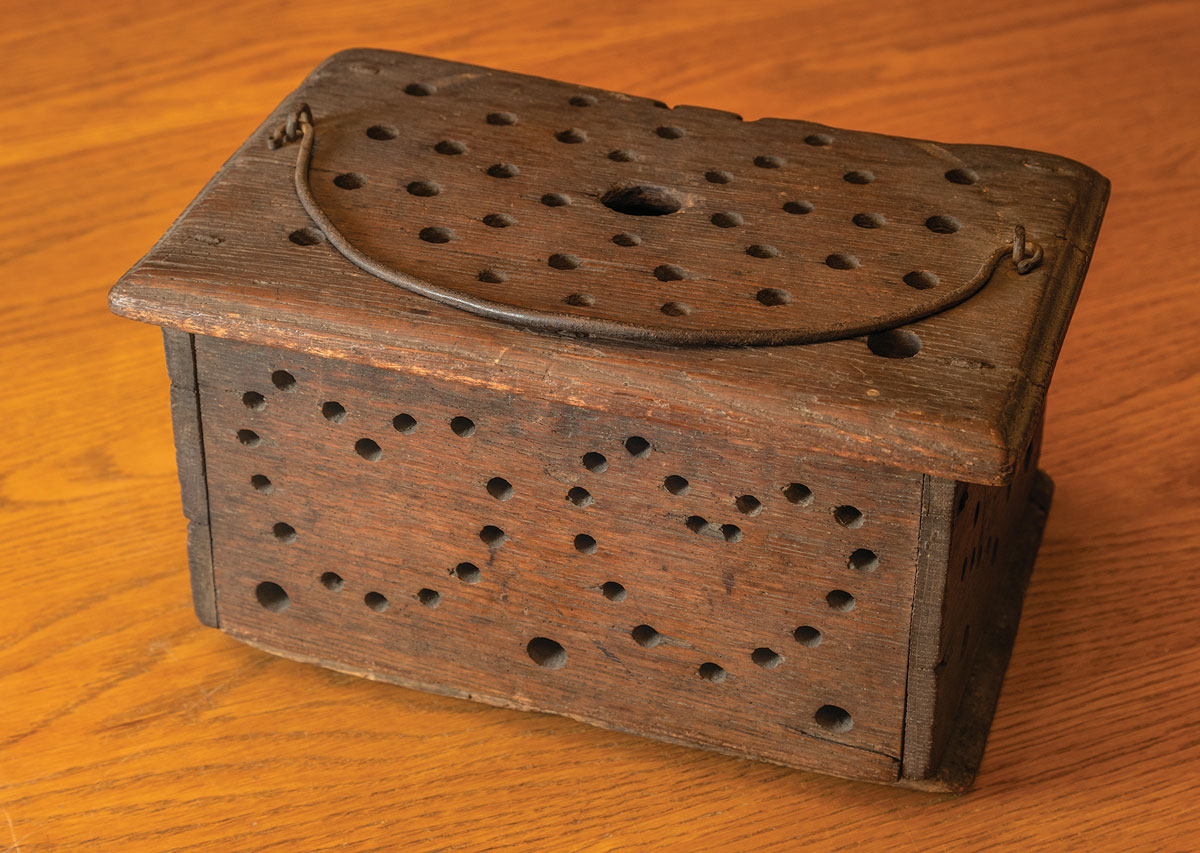
A century and a half ago, long before down jackets and Gore-Tex boots, keeping warm was difficult. Now, as students don their heavy coats, the Friends Historical Library of Swarthmore is showcasing an old-fashioned alternative to modern winter gear.
The FHL, which celebrated its 150th anniversary this fall, is displaying a collection of soapstone and wooden foot warmers. Although the popularity of such foot warmers declined by the end of the 19th century, these items served an essential purpose in their time.
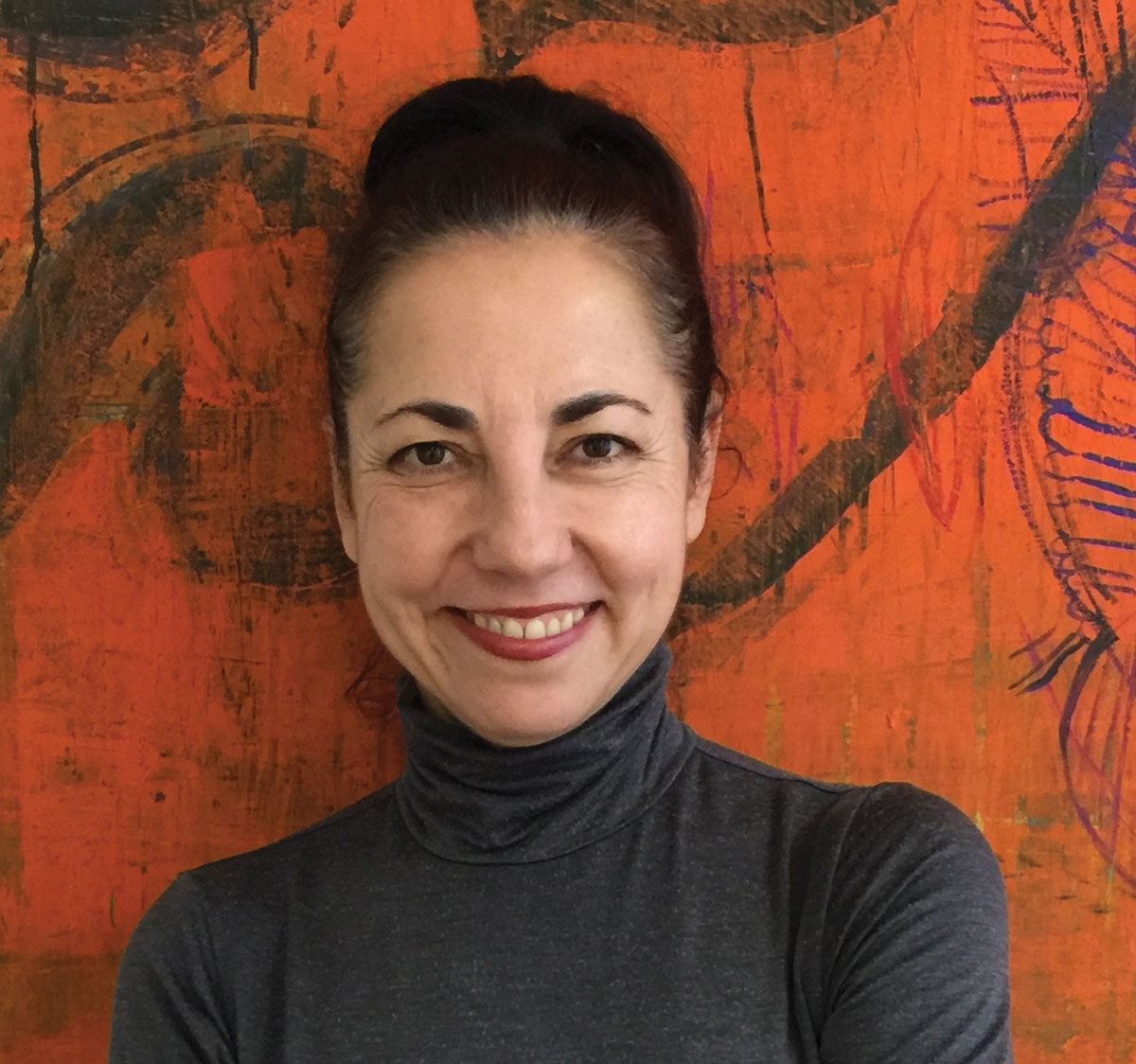
Seeking Refuge
Since 2015, thousands of migrants from the Middle East and Africa have sought refuge and work in Europe. Many of those who survive their harrowing journeys are unable to find employment and end up living on the streets. Appalled by their suffering, Dorit Sallis ’86 set up the Twin Star Project to provide migrants with the support they need to find sustainable employment and become financially independent.
How do you connect with migrants who need help?
We support Afghan refugees in Switzerland, where I live, but most of our migrants are based in Italy. I meet them on the streets of big Italian cities where they’re usually begging.
I tell them about the program and give them my number. Not all of them call me. We start building relationships with those who reach out and learn about their needs so we can begin supporting them. Our approach is unbureaucratic, fast, and customized to the specific needs of each migrant.
The aim is to alleviate the immediate stresses of poverty so that they can start planning for the next phase — finding a job and being able to support themselves and their families.
My experience has been uniformly positive. These migrants have risked everything to find safety and work in Europe. They’re ordinary people either born in impoverished and corrupt countries where it’s impossible for them to feed their children or else unwitting victims of war.

light, laughter, and community
Diwali sparkled at Swarthmore this fall. The global festival of lights is one of the major holidays celebrated by Hindus, Jains, Sikhs, and some Buddhists, notably Newar Buddhists.
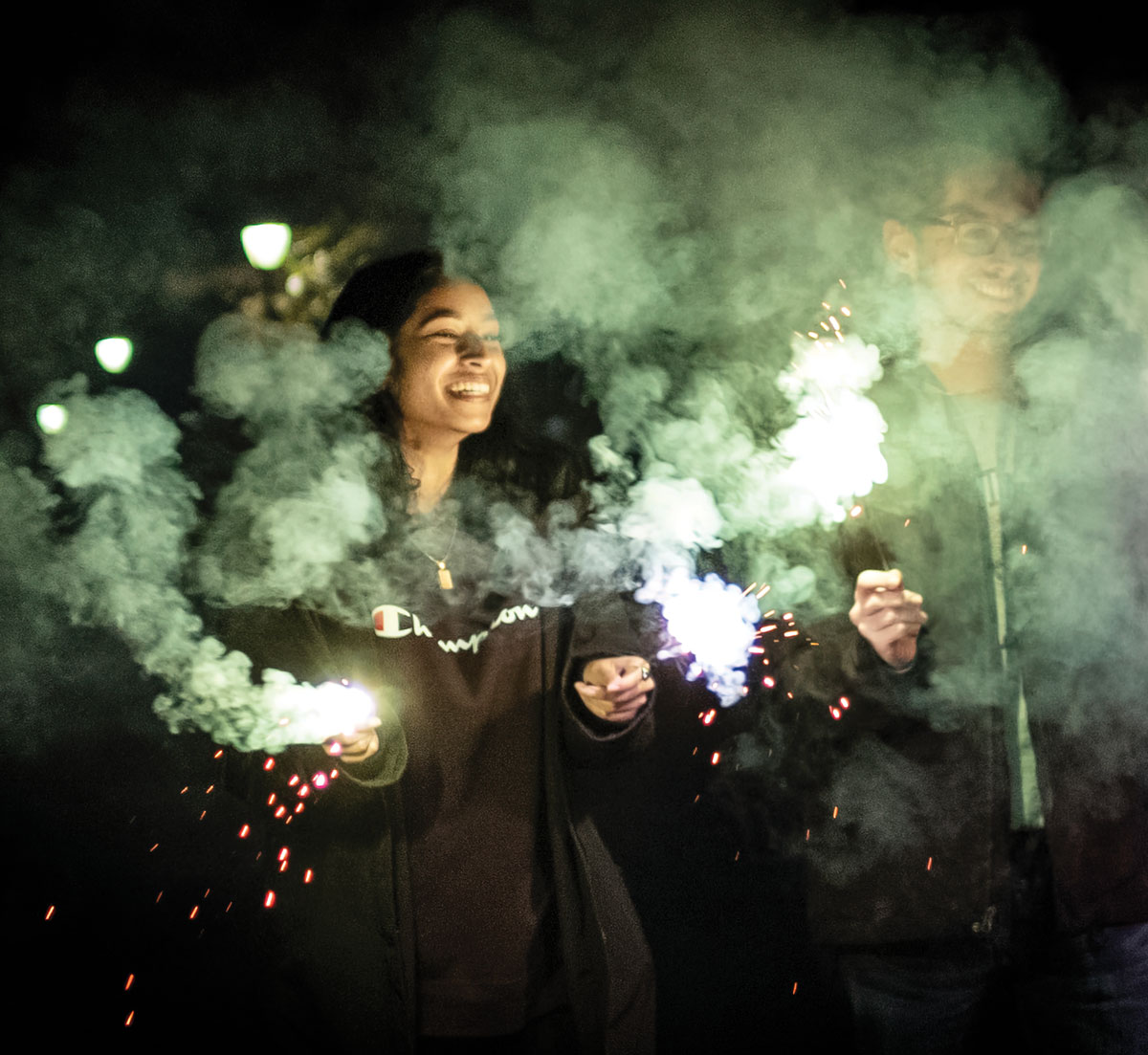
Back cover
— BoHee Yoon ’01, Alumni Council president
Give back like BoHee by volunteering with Swarthmore. Explore ways to get involved at swarthmore.edu/alumnivolunteers.
Back cover
— BoHee Yoon ’01, Alumni Council president


